Volcano Live
volcanolive.com
Yellowstone Volcano | John Seach

Wyoming-Idaho-Montana, USA
44.43 N, 110.67 W
summit elevation 2805 m
calderas
Yellowstone is the largest volcanic system in North America. The current caldera was formed by large eruptions 640,000 years ago.
Yellowstone contains 182 geysers and a mud volcano. Yellowstone plateau has been volcanically active for 2 million years. It has been the scene of some of the world's largest eruptions. The Yellowstone caldera has one of the world's largest hydrothermal systems. The most famous feature in Yellowstone is Old Faithful Geyser.
At least 15 000 cubic km of crystal-melt mush are located beneath the Yellowstone caldera.
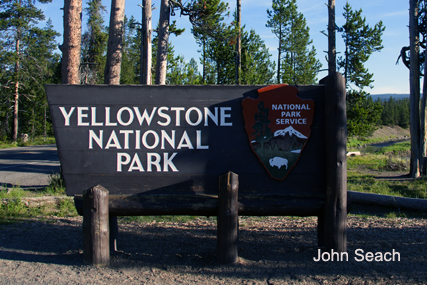
South entrance
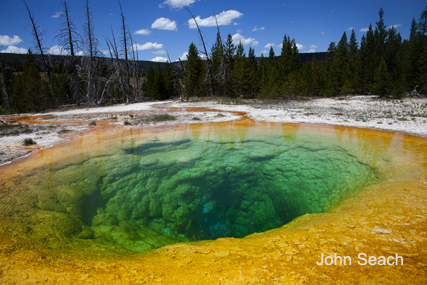
Thermal pool, upper geyser basin

Grand Prismatic spring
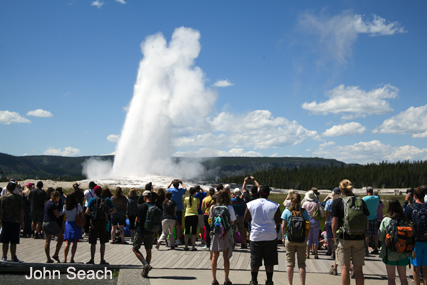
Old Faithful Geyser
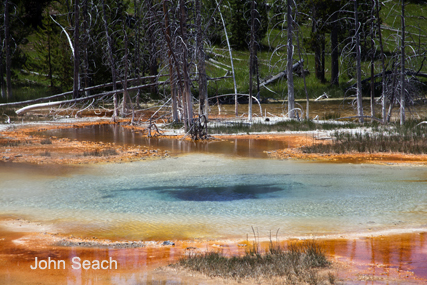
Thermal pool, upper geyser basin
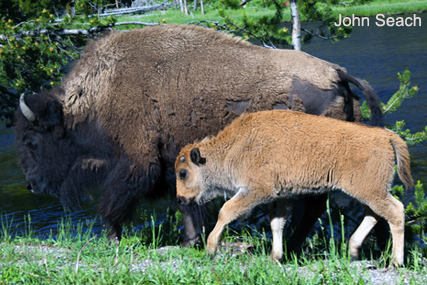
Yellowstone bison
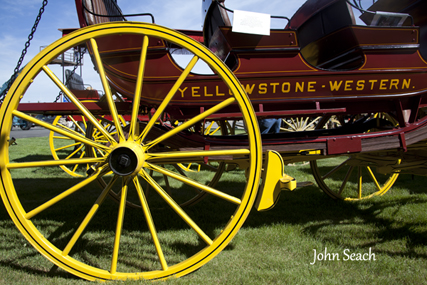
Yellowstone stage coach
2010 Earthquake Swarm
The January-February 2010 swarm was the second largest recorded at the volcano, with over 1800 earthquakes measured. The largest earthquake was magnitude 3.8 and was felt in the park and surrounding areas. The earthquakes are believed to be tectonic in origin caused by regional Basin and Range extension. Some earthquakes are caused by geothermal activity.
2008 Earthquake Swarm
Wednesday 31st December 2008
An earthquake swarm has been recorded at Yellowstone volcano. The swarm has been occurring since 26th December beneath Yellowstone Lake, three to six miles south-southeast of Fishing Bridge, Wyoming. A total of more than 250 earthquakes have been measured in the swarm. The largest earthquake was a magnitude 3.9 at 10:15 pm MST on 27th December. There have been nine earthquakes between magnitude 3 to 3.9 and approximately 24 between magnitude 2 to 3. Some events were felt by people in Yellowstone National park. Yellowstone is a dormant super-volcano, and earthquake swarms, ground uplift, and geothermal activity are common. There are no other signs of unrest at the volcano.
2003 Unrest
In 2003 there were changes in Norris Geyser Basin, which resulted in closure in hiking trails for safety reasons. New fumaroles were observed, and some geysers had raised temperatures. There have been 70 small earthquake swarms at Yellowstone volcano between 1983 and 2006.
Features of Interest in Yellowstone National Park
Mammoth Hot Springs
The hot spring terraces are a series of steps formed by hot water flowing up through limestone. Escaping carbon combines with calcium to precipitate as travertine. Features of the area include, Gardner River Canyon, Boiling River, Mt. Everts, and Bunsen Peak.
Norris Geyser Basin
The area contains the hottest geothermal features at Yellowstone. Features include, Roaring Mountain, Gibbon River, Virginia Cascades, and Norris-Canyon Blowdown.
Madison Area
Interesting features include, Artist Paint Pots, Gibbon Falls, Monument Geyser Basin, Madison River, Terrace Springs, Firehole River, Firehole Canyon Drive and Firehole Falls.
Old Faithful Area
Features include, Upper Geyser Basin, Lower Geyser Basin, Midway Geyser Basin, Lone Star Geyser Basin, Shoshone Geyser Basin, Craig Pass/Isa Lake, and many waterfalls.
Other Interesting Park Features
Yellowstone Lake, Abyss Pool, Fishing Cone, Isa Lake, Heart Lake, DeLacy Creek, Factory Hill, Lewis River, Red Mountains, Riddle Lake, Shoshone Lake, Snake River, Mud Volcano/Sulphur Caldron, Hayden and Pelican Valleys, Natural Bridge, Grand Canyon of the Yellowstone, Mt. Washburn,
Tower Fall, and Calcite Springs.
Further reading
Chang, W.L., Smith, R.B., Wicks, C., Farrell, J.M. and Puskas, C.M., 2007. Accelerated uplift and magmatic intrusion of the Yellowstone caldera, 2004 to 2006. Science, 318(5852), pp.952-956.
Lowenstern, J.B., Christiansen, R.L., Smith, R.B., Morgan, L.A. and Heasler, H., 2005. Steam explosions, earthquakes, and volcanic eruptions--what's in Yellowstone's future? (No. 2005-3024). US Geological Survey.
Yellowstone Volcano Eruptions
70,000 years ago, 160,000 years ago, 640,000 years ago.